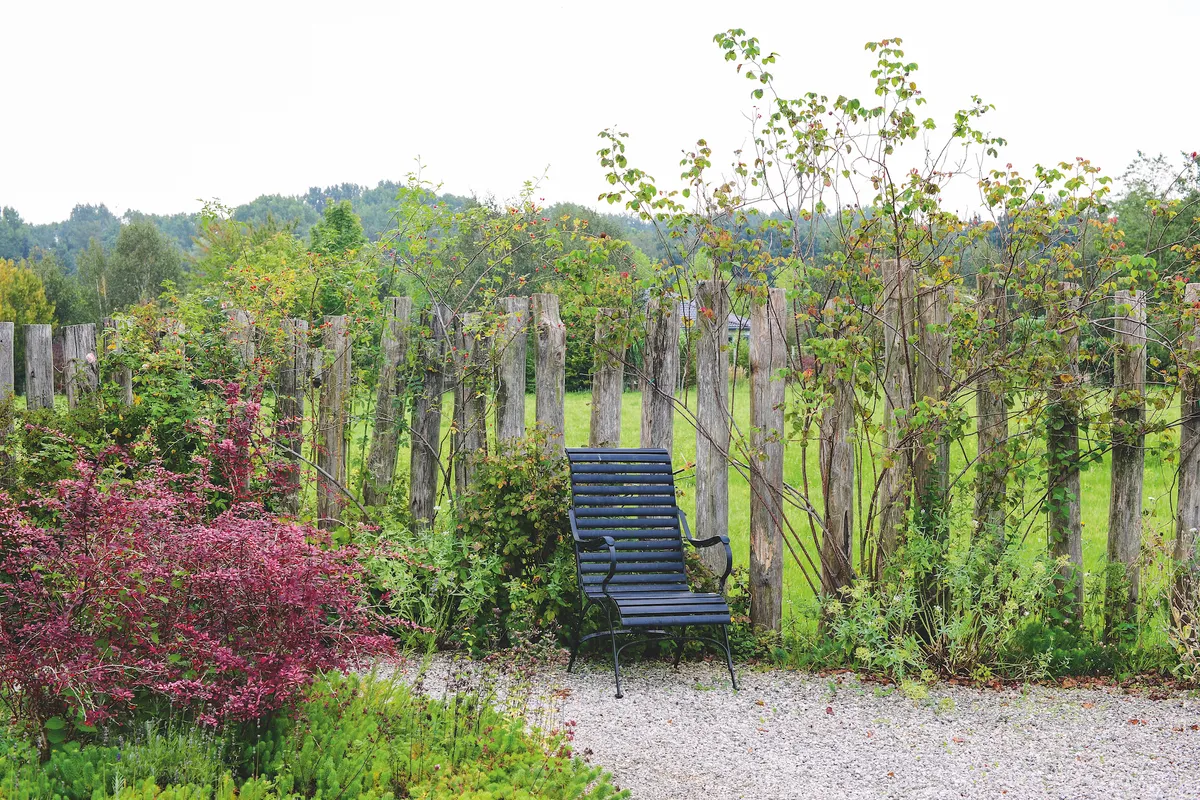For most of history people built houses and gardens using local materials and local techniques, for the simple reason that nothing else was available. Revolutions in transport changed all that and now architects and garden designers can get new ideas and materials from around the world at the click of a mouse.
Good design begins with an appreciation of locality; from the views out into the wider landscape to the underlying geology, climate and ecology. Using local materials in a garden helps open a conversation with its surroundings. It’s not about doing things a certain way just because that’s how they’ve always been done. It’s about developing a sense of connection with place that recognises a garden as part of a larger landscape and a timescale bigger than our own.
It's not just about a reverie with the past; it's also about reinvention, experimentation and the forging of new collaborations with old traditions.
Garden designer, Sarah Price
Architects will often create detailed 'mood boards' of local vernacular styles to inform their designs, to capture the feel for local materials and distinctive details that make a place unique; from brick coursings, windows, joinery, signage to kerb stones. Garden designers can do the same and there is no reason why time-honoured crafts can't be used alongside modern manufacturing processes and aesthetics – done well they accentuate each other.

Simplicity is best; in my local woods a raised wooden boardwalk contrasts with a partially collapsed, mossy dry-stone wall; in urban setting roughly textured finishes in new materials can successfully emulate the character of nearby historic walls. To make a mixture of old and modern you need a strong, single-minded vision, otherwise you risk a jarring cacophony of disparate styles
Here are eight design ideas that will add interest to your garden that use age-old crafts that are sustainable, practical, adaptable, durable and in harmony with the geographic and cultural context of the garden.
1
Dividing lines

This design by Swedish architects Wingårdhs shows how a traditional craft technique – in this case hurdle making – can be used in a contemporary manner; the hurdles are neatly framed within metal panels. The close repetition of the frames draws you in to explore the garden.
2
Standing stones

Travel to slate-rich Snowdonia, in north Wales and you’ll see dramatic, sheets of slate linked together with wire to contain upland sheep. Here they demonstrate the powerful impact of repetition within a landscape.
3
Fencing in

Sweden’s roundpole fences are a typical countryside feature; each province has its own style depending on local materials and customs. Traditionally, the spruce poles were long so that when they were in need of repair, they could easily be driven back into the ground. Amazingly, the oldest known roundpole fence dates back to the Iron Age.
4
Natural barriers

Laid hedges, such as this one from southern England, look beautiful even when first laid. If the cycle of laying and trimming is repeated every 15 to 25 years, hedges can last indefinitely.
5
Bit of a squeeze

An ancient ‘squeeze stile’ in Hartington in the Peak District looks like a pair of angel’s wings. In reality, it is a practical artefact; the gap is narrow enough to deter livestock while the curved profile gives space for your upper body and legs (provided you’re slim enough) to squeeze through. Modern interpretations in metal or stone could be equally as striking.
6
Tall story

At this Rectory garden in the Cotswolds, designer Dan Pearson has used the local Oolitic limestone to create dry-stone walls with tall, cloister-like proportions. Slot-like windows reinforce the elegant dimensions.
7
Ancient craft

Herringbone, a style of walling known locally as ‘curzy way’, is unique to north Cornwall, and was most probably introduced to Britain by the Romans.
8
Winding wall

Land artist, Andy Goldsworthy, describes the stone walls of the UK countryside as a living part of the landscape. Working with skilled craftsmen, he creates artworks that meander through forests or dry-stonewalls that form his rectilinear artwork Sheepfolds in Cumbria.
Further information
You can find out more about regional styles of hedgelaying here. You’ll also find information on hedgerows at Hedgelink and the National Hedge Laying Society.
The Dry Stone Walling Association of Great Britain provides information on this traditional craft, while Common Ground is a charity that champions local diversity. You can find out more about its work in: England In Particular by Sue Clifford and Angela King (Saltyard Books, 2006).
And find out more about what makes your local area distinctive in the The Pevsner Architectural Guides, a series of guide books on the architecture of the British Isles.
Words Sarah Price


